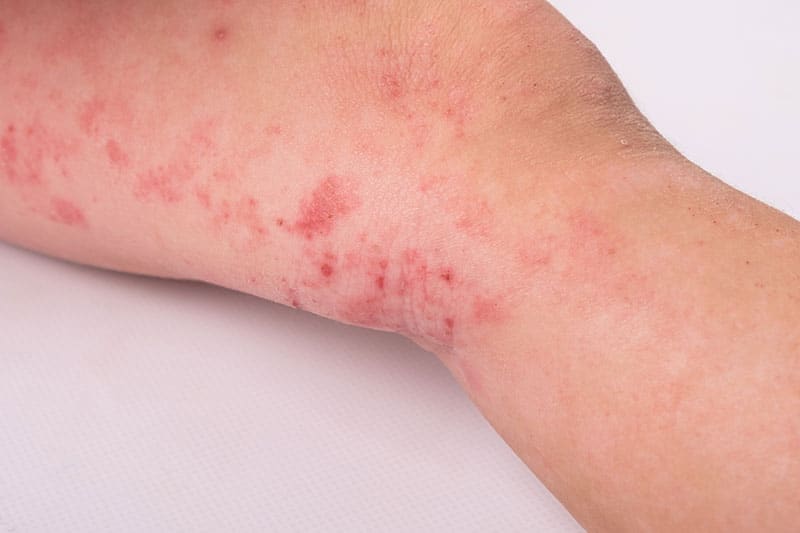A skin lesion is an area of the skin that appears different from surrounding skin in terms of color, shape, size, and texture. As they are a common condition seen in the primary care setting, family physicians need to be knowledgeable about the different types of skin lesions, and their diagnosis and management. Treatment of skin lesions would depend on the type of lesion and if malignancy is present. While benign skin lesions may not need treatment or can be managed with medications and other therapies, malignant skin lesions generally require excision and may be followed by radiation therapy, chemotherapy or immunotherapy. As skin procedures are complex, physicians usually rely on a medical coding company to report skin lesions and excision on claims.
Types of Skin Lesions
Skin lesions usually occur due to sunburns, contact dermatitis and other localized damage. They can also be indicative of infections, autoimmune or genetic disorders and other underlying medical conditions. Although most skin lesions are benign and require only monitoring, some can be malignant or premalignant. Removal of suspicious skin lesions can reduce the risk of progression.
Skin Lesion Excision
Patients presenting with concerning skin lesions may be referred to a surgeon or dermatologist. A biopsy will be performed to determine if the lesion is benign or cancerous. If found to be malignant, the skin lesion will require surgery or excision. Skin lesion excision is a procedure to remove a skin lesion and an area of surrounding tissue called the margin. The defect is later reconstructed with plastic surgery.
Coding skin lesion excision
The American Medical Association (AMA) defines excision as full-thickness. Codes are for full-thickness removal and should be selected based on the lesion type, the location, and the size of the excision, not the size of the lesion itself. Several factors should be taken into consideration when it comes to choosing codes for skin lesions and soft tissue excisions:
- Whether the lesion is benign, in-situ, malignant or uncertain as specified in the pathology report
- The size of the lesion(s) excised and the width of the margins – CPT instructs that code selection is determined by measuring “the greatest clinical diameter of the apparent lesion plus that (most narrow) margin required for complete excision”.
- In addition to the size, the location of each lesion should be documented.
- If multiple lesions are treated, multiple codes may be reported based on National Correct Coding Initiative guidelines. AAPC instructs that when multiple lesions are excised, e each lesion should be coded separately using a specific CPT and ICD-10-CM code for every lesion treated. In this case, modifier 59 Distinct procedural service should be appended to the second and all subsequent codes describing lesion excision in the same anatomic location.
- The appropriate CPT code should be reported along with the diagnosis code that matches the CPT code.
As excision codes include simple wound repair, the latter should not be reported separately. Layered closures may be billed separately, although the Centers for Medicare & Medicaid Services (CMS) does not pay for it in these cases.
Excision – Benign and Malignant Skin Lesions
Skin lesion excision codes fall into two main categories: codes for benign or non-cancerous lesions and codes for malignant or cancerous lesions.
- 11400-11446 Excision, Benign Lesions Procedures on the Skin
11400 -11406 trunk, arms or legs
11420 -11426 scalp, neck, hands, feet, genitalia
11440 -11446 face, ears, eyelids, nose, lips, mucous membrane
CPT codes 11400-11446 should be used to report a full-thickness excision (through the dermis) removal of a lesion, including margins, and includes simple (non-layered) closure.
- 11600–11646 Excision, malignant lesions
11600-11606 trunk, arms or legs
11620 – 11626 scalp, neck, hands, feet, genitalia
11640- 11646 face, ears, eyelids, nose, lips
Four common treatment options for malignant skin lesions are: surgical excision, electrodesccation, radiation therapy, and cryosurgery. Complete excision is the preferred treatment for malignant skin lesions, which includes removal of a margin of surrounding tissue to destroy microscopic tumor cells, which may have spread beyond the lesion’s visible borders. The excision of a malignant skin lesion and margins (CPT codes 11600-11646) is considered medically necessary when the pathology report confirms the existence of a malignancy.
Codes 11600–11646 include simple closure and local anesthesia. Appropriate codes should be reported separately if intermediate (12031-12057), complex (13100-13153), or reconstructive closure (15002-15261, 15570-15770) is required. If additional excision is done during the post-op period, modifier 58 should be appended to the re-excision procedure (www.findacode.com).
Excision vs Shaving and Destruction
In addition to the skin lesion excision codes, there are CPT codes to report lesion removal by shaving (11300-11313), destruction (17000-17004), and paring or cutting (11055-11057).
- 11300-11313 Shaving of Epidermal or Dermal Lesions
11300 -11303 trunk, arms, or legs
11305 -11308 scalp, neck, hands, feet, genitalia
11310 -11313 face, ears, eyelids, nose, lips, mucous membrane
Shave biopsies involve therapeutic removal of epidermal and dermal lesions without a full-thickness excision. They are performed using a sharp instrument, include local anesthesia, and may need only simple closure (not sutures) that is not separately billable.
- 17000–17250 Destruction Procedures on Benign or Premalignant Lesions
Destruction means ablation by methods such as electrosurgery, cryosurgery, laser, and chemical treatment. Destruction procedures include local anesthesia and generally do not require closing.
Medical billing outsourcing to an experienced service provider is a practical option to ensure accurate reporting of lesion excision. However, providers should keep in mind that proper documentation is critical to determine proper coding.




